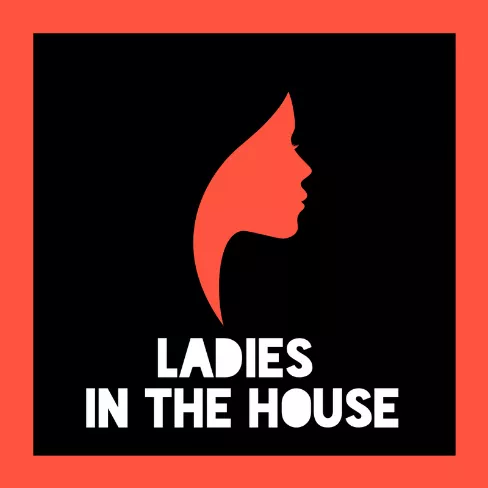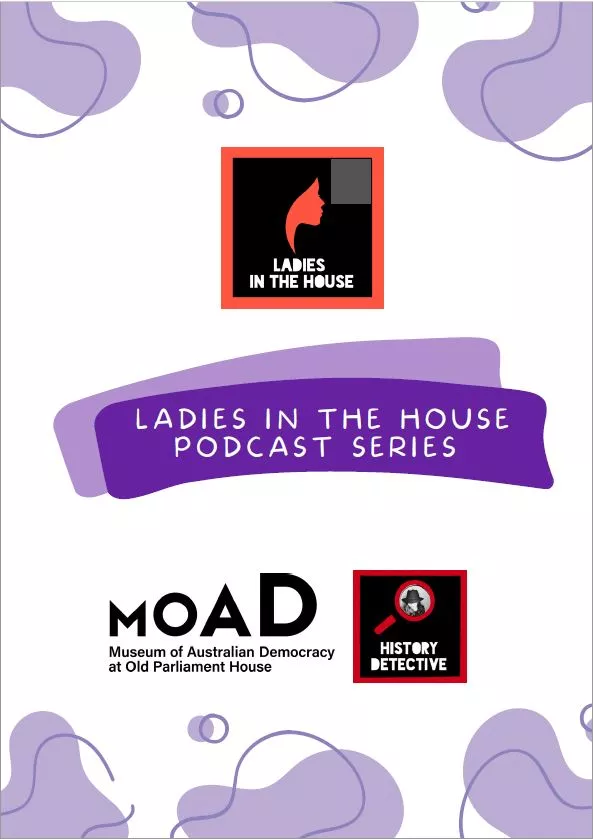Ladies in the House: Episode Margaret Guilfoyle
Intro (music)
Hi, this is Kelly Chase and you are listening to Season 3 of a Museum of Australian Democracy and History Detective Collaboration: Ladies in the House. In this 4-part series we are going to celebrate the lives of four incredible women and how they contributed to Australian democracy.
Today we are going to meet Margaret Guilfoyle who was the first female federal Cabinet minister to hold a portfolio and later became the first female finance minister.
Before I go on, there are a few words in that last sentence that I want to explain. First of all, cabinet and ministers. Currently, when politicians are elected there are 151 in the House of Representatives and 76 in the Senate. Of these 227 members of parliament, the elected government choose around 20 of these politicians to become ministers who look after different government departments. For example, there is the Minister for Education, for Defence, for Social Services, for Finance and so on. If you are the Minister for Education, you are in charge of the Department of Education, the Australian Curriculum, Australian National University and a whole lot of other education related organisations and boards. They call this group of organisations you are in charge of, a portfolio.
The Prime Minister selects about 20 ministers, some from the House of Representatives and some from the Senate and these ministers are called the cabinet, and the cabinet are in charge of making a lot of really important decisions for the country. Well, until Margaret Guilfoyle, there had been a few female politicians, but none of them had ever been a cabinet minister with a portfolio. So, let’s find out how Margaret Guilfoyle came to be the first woman in the federal cabinet with a portfolio.
Margaret was born in Ireland in 1926, and when she was two years old, her family moved to Australia and her father sadly passed away when she was 10. She went to a state school and at the age of 15, she left to become a secretary, but she knew of the importance of education and continued to go to night school and went on to study accountancy. She began working in an Australian exports company and when she was only 21 years old, she became the head office accountant- which was an unusual feat for a woman at the time.
It was around this time that she met her husband, who also worked in finance, and the couple went on to have three children together. She and her husband then made a life changing decision, and that was to join the Liberal Party. She was recognised as someone with enormous potential in politics and an organisation called the Australian Women’s National League mentored her and she eventually became the chair of the women’s section of the Liberal Party. So, in 1970, there was a vacancy in the Senate and Margaret Guilfoyle decided to run against a field of 20, mostly male, candidates. During her campaign she was chastised by an MP who asked her, who was going to look after her children, a question that no male candidate with children was asked.
She won her seat in the Senate, and at that time, there was only one other woman in parliament. In 1975, when the government changed hands, and the Liberal Party came to power, she firstly became the Minister for Education, and later held the position of the Minister for Social Security for 5 years, and finally she was appointed the first ever female Minister of Finance- an incredibly important ministerial position.
Whilst in parliament, she fought for many important issues that impacted women, including making maternity leave available to everyone, and she also improved benefits for families who were struggling. However, when she was offered the position of Minister for Women, she refused with the reasoning that she thought her skills in finance and accountancy would be more useful elsewhere. Other issues that she cared about were pollution and damage to the environment as well as caring deeply about the arts. In fact, after she left politics, she became the director of the Australian Children’s Television Council. This organisation was created to help make more quality Australian television content for children, rather than importing it all from the United States.
Margaret Guilfoyle passed away in 2020 at the age of 96 and her enduring legacy was that it was not only important that we should have more women representing the people in parliament, she thought that there should be more women in the cabinet, where the important decisions were being made. In her words, “It was said that I was the first to hold a cabinet post and administer a department – that might be true – but it had to be very important that I was not the last.”
Call to action (music)
What I would like you to think about today is this. Margaret Guilfoyle believed that we should have more equal gender representation in parliament. Why do you think important to have representation of different genders in a government that represents the people of Australia?
This is Kelly Chase, on the case.
Before I go, if you are a teacher and would like a free lesson plan for this episode or any of the Ladies in the House season one, two or three episodes, you can head to the Classroom Resources page on the Museum of Australian Democracy website to download the lesson plan. Lessons include pre-listening vocabulary, reflection questions, a call to action activity and the transcript. You’ll find a link to the page in the show notes.
See you next time!







